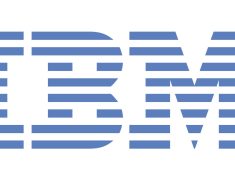Thank you. Listen to this article using the player above. ✖
Want to listen to this article for FREE?
Complete the form below to unlock access to ALL audio articles.
Scientists from the University of Rochester say deep learning can supercharge a technique that is already the gold standard for characterizing new materials. In an npj Computational Materials paper, the interdisciplinary team describes models they developed to better leverage the massive amounts of data that X-ray diffraction experiments produce.
During X-ray diffraction experiments, bright lasers shine on a sample, producing diffracted images that contain important information about the material’s structure and properties. Project lead Niaz Abdolrahim, an associate professor in the Department of Mechanical Engineering and a scientist at the Laboratory for Laser Energetics (LLE), says conventional methods of analyzing these images can be contentious, time-consuming, and often ineffective.
“There is a lot of materials science and physics hidden in each one of these images and terabytes of data are being produced every day at facilities and labs worldwide,” says Abdolrahim. “Developing a good model to analyze this data can really help expedite materials innovation, understand materials at extreme conditions, and develop materials for different technological applications.”
The study, led by materials science PhD student Jerardo Salgado, holds particular promise for high-energy-density experiments like those conducted at LLE by researchers from the Center for Matter at Atomic Pressures. By examining the precise moment when materials under extreme conditions change phases, scientists can discover ways to create new materials and learn about the formation of stars and planets.
Want more breaking news?
Subscribe to Technology Networks’ daily newsletter, delivering breaking science news straight to your inbox every day.
Abdolrahim says the project, funded by the US Department of Energy’s National Nuclear Security Administration and the National Science Foundation, improves upon previous attempts to develop machine learning models for X-ray diffraction analysis that were trained and evaluated primarily with synthetic data. Abdolrahim, Associate Professor Chenliang Xu from the Department of Computer Science, and their students incorporated real-world data from experiments with inorganic materials to train their deep-learning models.
More X-ray diffraction analysis experimental data needs to be publicly available to help refine the models, according to Abdolrahim. She says the team is working on creating platforms for others to share data that can help train and evaluate the system, making it even more effective.
Reference: Salgado JE, Lerman S, Du Z, Xu C, Abdolrahim N. Automated classification of big X-ray diffraction data using deep learning models. npj Comput Mater. 2023;9(1):1-12. doi: 10.1038/s41524-023-01164-8
This article has been republished from the following materials. Note: material may have been edited for length and content. For further information, please contact the cited source.


![[2401.00368] Improving Text Embeddings with Large Language Models [2401.00368] Improving Text Embeddings with Large Language Models](https://aigumbo.com/wp-content/uploads/2023/12/arxiv-logo-fb-235x190.png)

